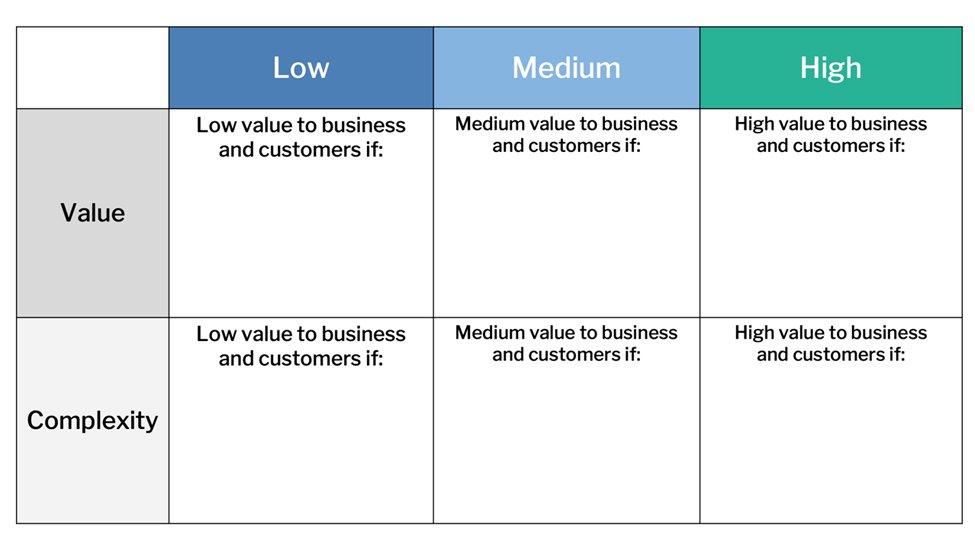
MoSCoW Analysis
Prioritize the requirements to be included as part of the scope of your new project or next release.

The purpose of a Prioritization Criteria framework is to determine the relative priority of different initiatives based on the goals and capabilities of your organization. The framework is typically used when you have identified several potential initiatives and need to choose what to tackle first. While there are many iterations of this framework, most are based on the concepts of value and complexity. Value refers to what is important to you and your customers. Complexity refers to the level of difficulty or resources required for implementation. This framework forces you and your team to align on what represents value and complexity for your organization. Once the criteria has been finalized, you can begin evaluating different initiatives to determine relative priority.
Lombardo, C., McCarthy, B., Ryan, E., Connors, M. “Product Roadmaps Relaunched: How to Set Direction while Embracing Uncertainty”, O’Reilly, 2018

Prioritize the requirements to be included as part of the scope of your new project or next release.

Organize and visualize the relative priority of different marketing initiatives for your organization.
This is a project from Kickframe – a digital marketing strategy consulting and training company.